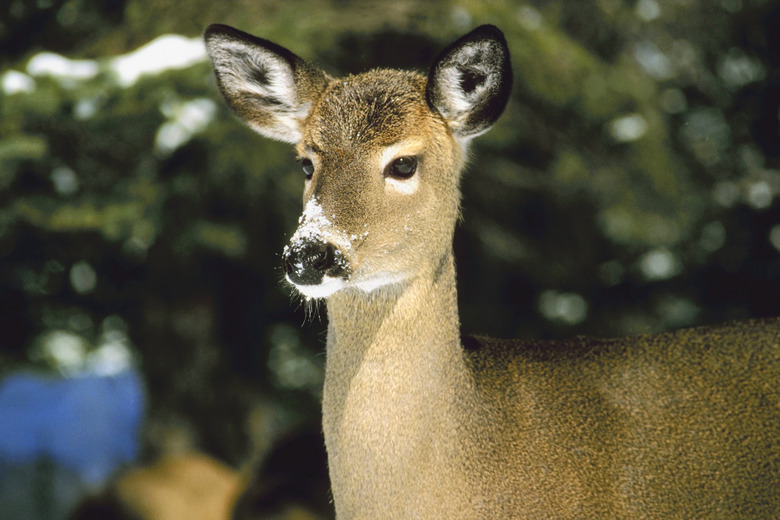Homemade Automatic Deer Feeder
Commercial deer feeders are available, but making your own gives you more options, and can be less expensive. How large a feeder you make depends on the size deer population you wish to feed. Just a few deer can be fed with a small bucket, but a large population is better served a large feeder.
Food Container
Food Container
The actual storage container can be as simple as a 5 gallon plastic or metal paint bucket. Use a 30 gallon trash can or even a 55 gallon drum when setting up to feed larger herds or if you simply wish to fill the container less often. The more feed you place in your container, the more difficult it will be to hoist it on a tree limb.
Raccoons, squirrels and other critters will also be interested in the cache of food, so it's important to have a cover for the container. The cover should be able to be secured in place so that may mean drilling a few holes to modify the container with a latch.
If using aluminum buckets, cans or drums, a coat or two of paint will dull the shine. Use deep greens, browns or even camouflage to cover the container so it will better blend in with the surroundings.
Automate
Automate
The mechanism to automatically distribute food from the container can be purchased from outdoor equipment suppliers. These systems usually have a spreader and a timer with variable adjustments for the number of times feed is distributed per day and for the length of time in seconds that feed is distributed. Deer are more comfortable eating feed for which they browse or forage because it's a more natural presentation than a pile of food. Look for a spreader that broadcasts the feed in a wide arc. The spreader/timer mechanism has predrilled mounting holes so it can be attached to any container. Drill corresponding holes in your feed container and use bolts to mount the mechanism.
Mounting the Feeder
Mounting the Feeder
Smaller containers are usually attached to rope that is slung across a tree branch. The feeder is then manually hoisted up to about 6 feet from the ground and secured by tying off the other end of the rope. The spreader will then distribute feed. After this, it's a matter of checking the feed supply periodically and refilling the container. The spreader/timer mechanism will take care of the feeding schedule.
For very large containers, like a 55 gallon drum, you might want to consider building a permanent platform for additional support instead of trying to use a rope to pull that amount of feed into a tree. Deer get used to new structures, so a platform with a feed container mounted several feet off the ground might be best.
Cite This Article
MLA
Crain, Sydnee R.. "Homemade Automatic Deer Feeder" sciencing.com, https://www.sciencing.com/homemade-automatic-deer-feeder-5946355/. 24 April 2017.
APA
Crain, Sydnee R.. (2017, April 24). Homemade Automatic Deer Feeder. sciencing.com. Retrieved from https://www.sciencing.com/homemade-automatic-deer-feeder-5946355/
Chicago
Crain, Sydnee R.. Homemade Automatic Deer Feeder last modified March 24, 2022. https://www.sciencing.com/homemade-automatic-deer-feeder-5946355/
